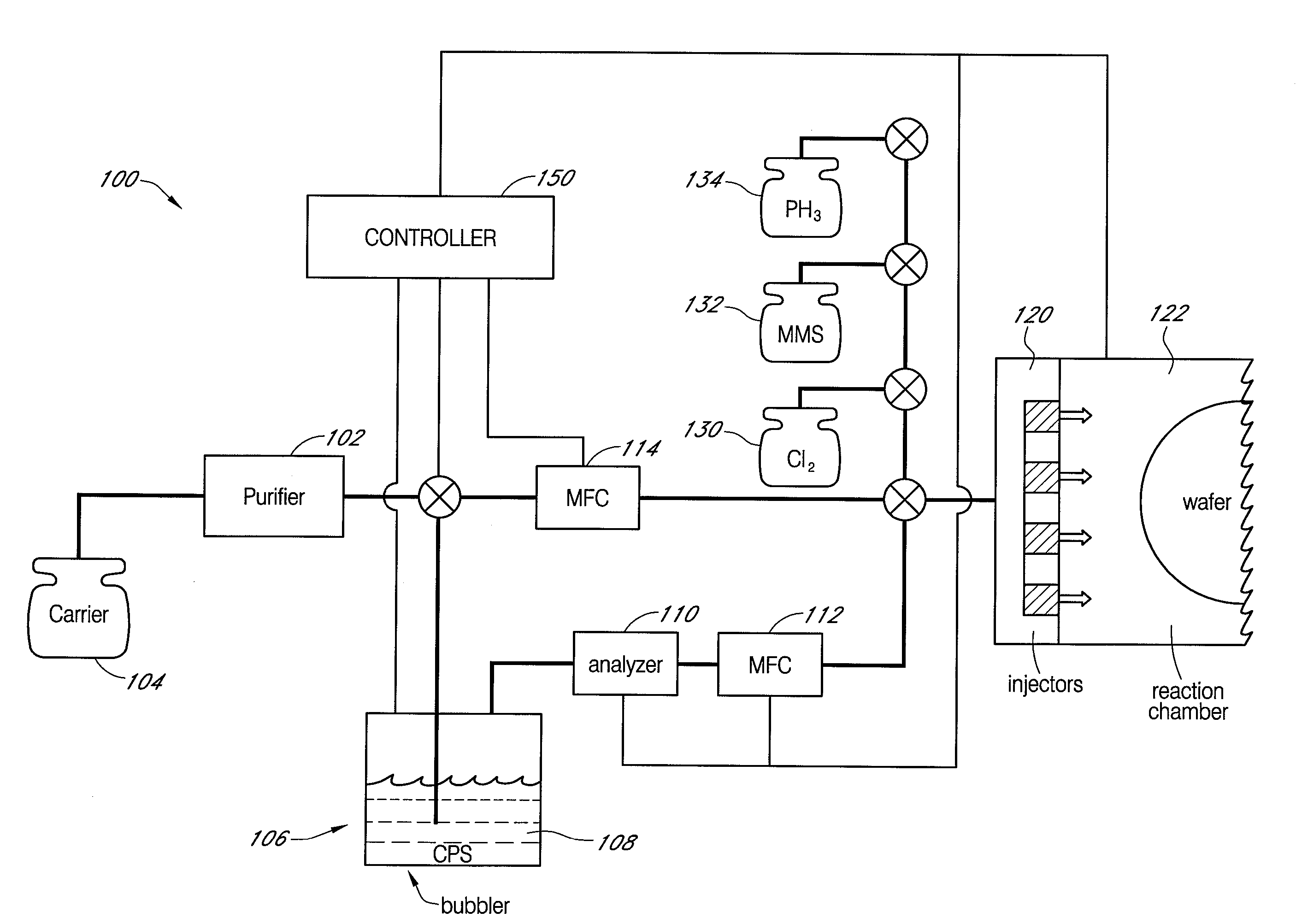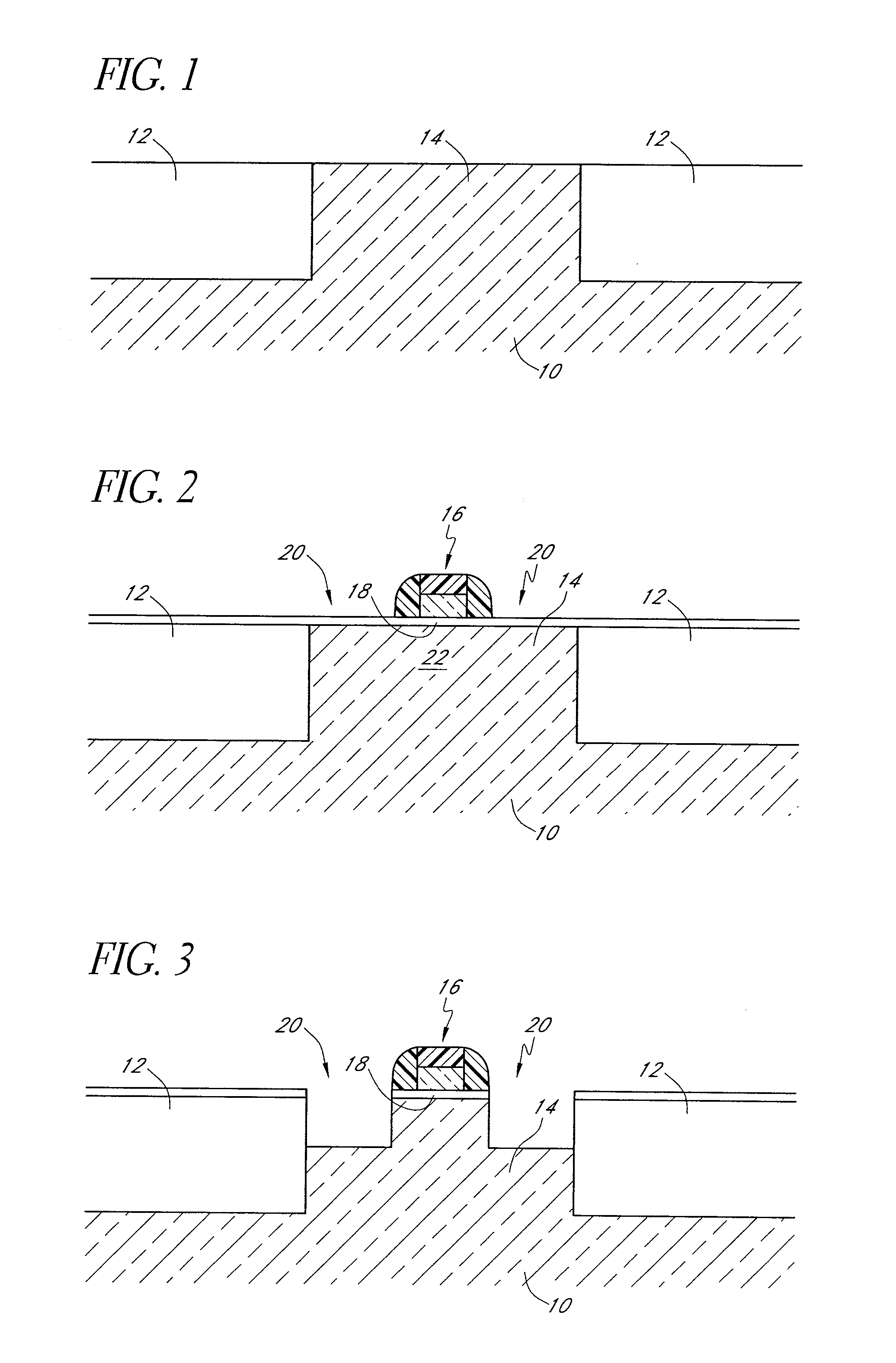Methods and systems for selectively depositing si-containing films using chloropolysilanes
a technology of chloropolysilane and selective depositing, which is applied in the direction of polycrystalline material growth, crystal growth process, chemically reactive gas, etc., can solve the problems of few advantages, few studies performed, and the development of commercial sources of trisilanes in the past , to achieve the effect of less sensitiv
- Summary
- Abstract
- Description
- Claims
- Application Information
AI Technical Summary
Benefits of technology
Problems solved by technology
Method used
Image
Examples
example 1
[0109] This example illustrates the deposition of selective epitaxial silicon films over mixed morphology substrates.
[0110] An eight-inch unpatterned Si wafer substrate and separate wafer with a fully oxidized (1000′) surface are serially loaded into and processed in an Epsilon E2500™ reactor system. The substrates are each introduced into the reactor system at 900° C., a hydrogen flow rate of 20 slm is used initially for the bare wafer, and the substrate is allowed to stabilize for 1 minute. The hydrogen flow is then shut down as the temperature of the substrate is reduced to 550° C. The substrate is then allowed to stabilize for 10 seconds, after which time a flow of 20 standard cubic centimeters per minute (sccm) of chloropolysilane (a mixture consisting essentially of 75% by weight dichlorodisilane and 25% by weight trichlorodisilane) and a flow of 12.5 sccm of chlorine is introduced at a deposition pressure of 64 Torr for about 3 minutes. A continuous, uniform silicon film hav...
example 2
[0111] Deposition conditions are varied to identify a selective CVD condition as follows: A quartz tube furnace is heated to temperature of about 550° C. A flow of 20 sccm of chloropolysilane (a mixture consisting essentially of 75% by weight dichlorodisilane and 25% by weight trichlorodisilane) and a flow of 75 sccm of chlorine is introduced to the quartz tube furnace in the absence of a carrier gas at a deposition pressure of 64 Torr. No deposition is observed. Since the furnace is quartz, deposition on the walls is indicative of CVD conditions on an oxide surface, and thus it is apparent that this is likely to be an etching condition for oxide surfaces. The chlorine flow is reduced in stages to about 12.5 sccm over the course of about 5-6 minutes, at which time a deposit (silicon) forms on the walls of the furnace, indicating that deposition is less selective than at higher chlorine flow rates. Thus, under these conditions, this CVD condition is likely to be selective on a mixed ...
example 3
[0112] Deposition conditions are varied to identify a selective CVD condition as described in EXAMPLE 2, except that the deposition temperature is 500° C., the deposition pressure is 4 Torr, and a 300 sccm helium carrier gas is used. As in EXAMPLE 2, the chloropolysilane flow is 20 sccm and the initial chlorine flow rate is 75 sccm. At this initial condition, no deposition is observed, and thus it is apparent that this is likely to be an etching condition for oxide surfaces. The chlorine flow is reduced in stages to about 20 sccm, at which time a slight deposit (silicon) begins to form on the walls of the furnace, indicating that deposition is less selective than at higher chlorine flow rates. Thus, under these conditions, this CVD condition is likely to be selective on a mixed substrate at a chlorine flow slightly higher than about 20 sccm. The deposition becomes progressively heavier as the chlorine flow is reduced in stages to about 2.5 sccm, then progressively lighter as the chl...
PUM
| Property | Measurement | Unit |
|---|---|---|
| temperature | aaaaa | aaaaa |
| pressure | aaaaa | aaaaa |
| temperature | aaaaa | aaaaa |
Abstract
Description
Claims
Application Information
 Login to View More
Login to View More - R&D
- Intellectual Property
- Life Sciences
- Materials
- Tech Scout
- Unparalleled Data Quality
- Higher Quality Content
- 60% Fewer Hallucinations
Browse by: Latest US Patents, China's latest patents, Technical Efficacy Thesaurus, Application Domain, Technology Topic, Popular Technical Reports.
© 2025 PatSnap. All rights reserved.Legal|Privacy policy|Modern Slavery Act Transparency Statement|Sitemap|About US| Contact US: help@patsnap.com



